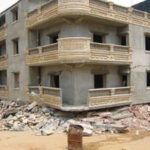Reinforced concrete is one of the most widely used modern building materials. Concrete is an “artificial stone” obtained by mixing cement, sand, and aggregates with water. Fresh concrete can be molded into almost any shape, giving it an inherent advantage over other materials. It became very popular after the invention of Portland cement in the 19th century; however, its limited tension resistance initially prevented its wide use in building construction. To overcome poor tensile strength, steel bars are embedded in concrete to form a composite material called reinforced concrete (RC). The use of RC construction in the modern world stems from the wide availability of its ingredients – reinforcing steel as well as concrete. Except for the production of steel and cement, the production of concrete does not require expensive manufacturing mills. But, construction with concrete does require a certain level of technology, expertise and workmanship, particularly in the field during construction. Despite this need for sophistication and professional inputs, a large number of single-family houses or low-rise residential buildings across the world have been and are being constructed using RC without any engineering assistance. Such buildings, in seismic areas, are potential death traps. This is the motivation behind developing this tutorial.
Further introductory reading: “Reinforced Concrete Frame Construction”
(Ahmet Yakut)
Download: ENGLISH [0.3MB]
Contents:
-Background and history
-Performance in previous earthquakes
-Seismic rehabilitation and retrofit

